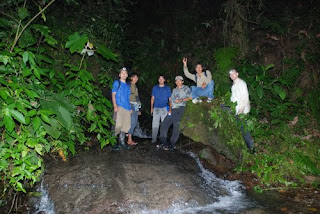
One of our objectives in the project is to increase the awareness about amphibian situation at global and Bolivian level. For this reason we organized the amphibian exhibition in the Museo de Historia Natural Alcide d’Orbigny, with information about amphibians, games and an exhibition with the species that we are working. Also we are setting up the captive breeding facility where we are working with the endangered species of frogs of the genus Telmatobius.

For this we prepared our exhibitions and the educational material and the terrariums and aquariums, for this we had the help of Dirk, with him we made an terrarium where we can show amphibians from rainforest this work took us a couple of weeks but the results were very good, we also worked with the aquarium to keep the Critically endangered Titicaca frog. With this exhibition we want to show people about amphibians that are very unknown in the public and also showing the work we are doing to protect those species.

During this week several school children visited the exhibition and got involved in the different activities related with amphibians like games, displays and talks. There were also some local communities that with the project visited the museum to see and learn about conservation and research that the museum and the project is developing so in this way we can have their support. It was very interesting that now those communities are more enthusiastic to participate in different ways to support the conservation of Bolivian amphibians at local level.

This exhibition will be open in the museum all the time and we also plan to develop an itinerant exhibition that can travel to different places of Bolivia, so the people can realize more about amphibians and the high diversity that Bolivia holds and about the work of the project and other researchers.





 (Centro de Instruccion de Buceo en Altura CIBA) that supported us with some weight and air that we used for our thanks. After a meeting they showed the support for the project and they are interested to work in the future in the monitoring and education activities in the lake.
(Centro de Instruccion de Buceo en Altura CIBA) that supported us with some weight and air that we used for our thanks. After a meeting they showed the support for the project and they are interested to work in the future in the monitoring and education activities in the lake.

 For this time we were with a Biologist a Belgium friend, Dirk that was helping us with the fieldwork and also with photography. Now after this trip we are planning with German to develop a fieldguide of the amphibians of the area.
For this time we were with a Biologist a Belgium friend, Dirk that was helping us with the fieldwork and also with photography. Now after this trip we are planning with German to develop a fieldguide of the amphibians of the area. 

